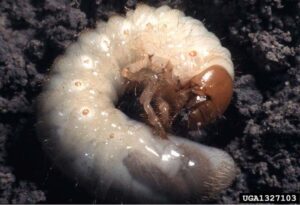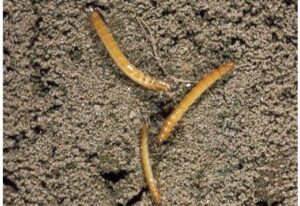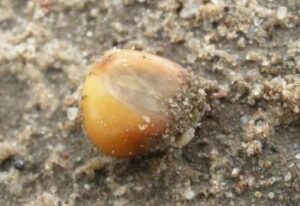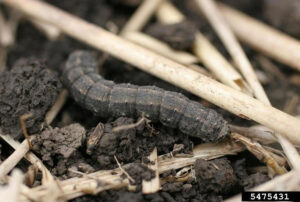Introduction
As early as Egyptian agriculture, various materials were used as seed treatments to protect seeds after seeding. Selecting active ingredients for use as seed treatment should consider soil diseases, nematode species present, and early insect pressure. Cultural reasons for using a seed treatment include soil temperature, moisture, early seeding date, crop is for seed production, and expectation of economic return. Seed treatments can help address many problems and there are several different products from which
to choose.
Why are farmers embracing seed treatments?
Seed treatments have proven to be a convenient method to battle early-season insects and diseases as well as promoting early-season plant growth. Stand establishment is one of the most important yield contributing factors. Many things can limit stand establishment and corn seed treatments can often help preserve yield potential and grain quality.
How can a reduction in pesticide still be effective?
Seed treatments allow a reduction in the active ingredient exposure – approximately a half an ounce released an acre of soil. Active ingredients placement near the seed creates a zone of protection within and surrounding the seed with potentially less impact on the environment. Seed treatments also can reduce or eliminate the number of insecticide foliar sprays due to targeted protection against insect pests. Other benefits growers have the potential to experience with seed treatment use include:
- Good seedling emergence and plant health, especially in no-till or conservation tillage management.
- Protection against some above and below-ground pests including some that introduce fungal, bacterial, and viral diseases.
- High yield potential and possible reduction in the use of natural resources, energy, money, and labor.
What types of corn seed treatments are available?
Different seed treatments are used alone or in combination to help address a number of pests, diseases, and nutrient deficiencies as well as to enhance plant growth. These treatments include insecticide, fungicides, nematicides, and biologicals. Fungicides help to protect against soilborne and seedborne diseases, including Fusarium, Rhizoctonia solani, and Pythium. Biologicals add a new component to seed treatment offerings. Acceleron® BioRise® 360 ST is designed to enhance mycorrhizal spores and promotes mycorrhizal symbioses in the root zone. Insecticide and nematicide offerings vary by trait and class. We describe the pests they control in the following questions.
What insect pests can be managed with seed treatments?
Since 2008, in-furrow insecticide treatments have been getting replaced with insecticide-treated corn seed. By 2011, 80% of corn seed was being treated with neonicotinoid insecticide seed treatment. Insecticide seed treatments have been shown to improve corn yield potential. This is especially the case for corn growers in the south where winter temperatures are not low enough to stop insect lifecycles. Growers across the Arkansas, Louisiana, Mississippi, and Tennessee experienced a corn yield benefit of about 11 bu/acre for seed treated with a fungicide plus neonicotinoid insecticide compared to seed treated with fungicide alone.
Even in the Mid-West, soils warm enough for seeding often trigger subterranean insect activity. Infestations are unpredictable between years, and thresholds may not reflect current cost of production or commodity prices. Defense against these infestations becomes a priority to protect the grower’s seed investment. Select active ingredients and seed treatment rates based on the identified pests to help achieve pest control. Insects controlled with a seed treatment such as Acceleron® Seed Applied Solutions with 50 mg active ingredient/seed of Poncho®/VOTIVO® include:
- White Grub (Figure 1)
- European, chafer larvae, Japanese beetle larvae, May/June beetle larvae
- Wireworm (Figure 2)
- Seedcorn Maggot (Figure 3)
- Southern Green Stink Bug
- Southern Corn Rootworm
- Storage pests
- Indian meal moth, lesser grain borer, red flour beetle, rice weevil, rusty grain beetle
- Sugarcane beetle
- Corn Flea Beetle
- Corn Leaf Aphid
- Black cutworm (Figure 4)
- Chinch bug
- Grape Colapsis
- Thrips

Figure 1. White Grub. Photo courtesy of Alton N. Sparks, Jr., University of Georgia, Bugwood.org.

Figure 2. Wireworm. Photo courtesy of R.J Reynolds Tobacco Company Slide Set, R.J. Reynolds Tobacco Company, Bugwood.org.

Figure 3. Seed corn maggot. Photo courtesy of Maiusz Sobieski, Bugwood.org.

Figure 4. Black cutworm. Photo courtesy of Roger Schmidt, University of Wisconsin-Madison, Bugwood.org
How does nematode protection work in corn seed treatment offerings?
VOTIVO® seed treatment has Bacillus firmus I-1582; a biological agent with activity as a nematode repellent. The following is a list of corn nematodes controlled or suppressed with VOTIVO® seed treatment offering:
- Dagger
- Lance
- Needle
- Ring
- Root knot
- Root lesion
- Spiral
- Sting
- Stubby Root
- Stunt
What are my options for below-ground insect control if I do not use an insecticide seed treatment or an in-furrow insecticide?
There are no reach back insecticide treatments to control or suppress below-ground insects such as wireworm, white grub, seed corn maggot, or nematodes if a seed treatment such as Poncho®/VOTIVO® or an in-furrow insecticide treatment is not used at planting. Some farmers have been known to replant corn fields in early spring due to insect damage.
Conclusion
Modern agriculture has continued to develop the Egyptian concept of treating crop seeds. Statistics from 2014, reported 90% of corn seed was planted with seed treatment. Efforts to protect seed investments from soil pests and stressed growing conditions should be discussed with your seed brand representative.
Sources:
1. Byamukama, E. and Strunk, C. 2019. Managing corn diseases with seed treatments. iGrow Corn Best Management Practices. Ch. 49. South Dakota State University Extension.
2. North, J.H., Gore, J., et. al. 2018. Value of neonicotinoid insecticide seed treatments in mid-south corn (Zea mays) production systems. Journal of Economic Entomology. Vol. 111. Pgs. 187-192.
3. Gullickson, G. 2022. Do seed treatments pay off? Successful Farming. https://www.agriculture.com/crops/ soybeans/a-seed-treatment-skirmish.
Legal Statements
ALWAYS READ AND FOLLOW PESTICIDE LABEL DIRECTIONS. FOR CORN, EACH ACCELERON® SEED APPLIED SOLUTIONS OFFERING is a combination of separate individually registered products containing the active ingredients: BASIC plus Poncho®/VOTiVO® Offering for corn: metalaxyl, ethaboxam, prothioconazole, fluoxastrobin, clothianidin, Bacillus firmus I-1582. ELITE plus Poncho®/VOTiVO® Offering for corn: metalaxyl, ethaboxam, clothianidin, and Bacillus firmus I-1582; prothioconazole and fluoxastrobin at rates that suppress additional diseases. BASIC Offering for corn: metalaxyl, prothioconazole, fluoxastrobin, ethaboxam, and clothianidin. ELITE Offering for corn: metalaxyl, ethaboxam, and clothianidin; and prothioconazole and fluoxastrobin at rates that suppress additional diseases. BioRise® Corn Offering is the on-seed application of BioRise® 360 ST. BioRise® Corn Offering is included seamlessly across offerings on all class of 2017 and newer products. The distribution, sale, or use of an unregistered pesticide is a violation of federal and/or state law and is strictly prohibited. Not all products are approved in all states. Performance may vary, from location to location and from year to year, as local growing, soil and weather conditions may vary. Growers should evaluate data from multiple locations and years whenever possible and should consider the impacts of these conditions on the grower’s fields. Poncho®, Poncho®/Votivo® and Votivo® are trademarks of BASF Corporation. Acceleron®, Bayer, Bayer Cross and BioRise® are trademarks of Bayer Group. All other trademarks are the property of their respective owners. ©2023 Bayer Group. All rights reserved. 1215_98201
